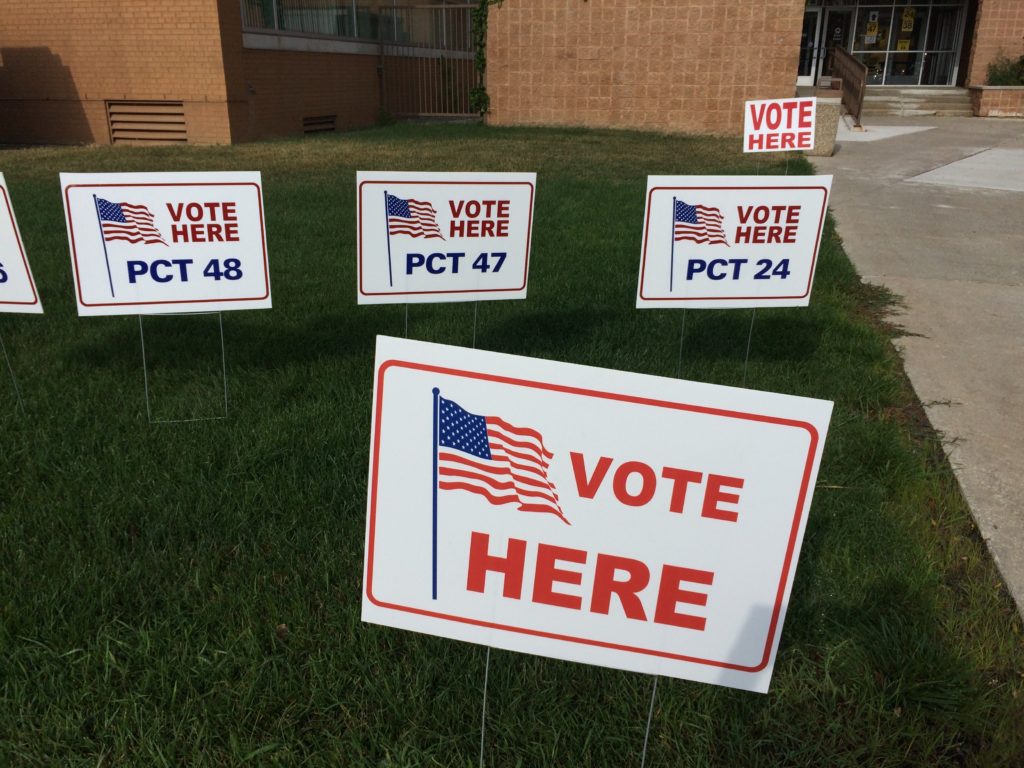By Paul Rozycki
Last month’s midterm election may have been the most intense and energetic in recent memory, and when it was all said and done the results revealed several new directions to our politics, highlighting the strong reaction to Donald Trump, and the divisions in today’s politics.
Midterm elections are usually rather low-key predicable affairs, where the party out of power gains a few seats in the Congress, and a modest change that follows.
From all indications this past election broke the mold on most of those assumptions.
First, the voter turnout broke records that go back for nearly a half century. Typically, about 40 percent of the voters turn out in midterms. This year many estimate that nearly 58 percent of potential voters turned out, a number that hasn’t been seen since the early 1960s. In Genesee County nearly 57 percent of the voters showed up at the polls.
The “blue wave”
 That large turnout was expected to be good news for Democrats, and for the most part it was, as a “blue wave” of voters showed up, giving the party majority control of the U.S. House.
That large turnout was expected to be good news for Democrats, and for the most part it was, as a “blue wave” of voters showed up, giving the party majority control of the U.S. House.
Two factors were key in both the turnout and the Democratic victory—Donald Trump and the #MeToo movement.
As the most polarizing president in recent history, Trump went on the campaign trail and boasted that the election was all about him, even though he wasn’t on the ballot. Even if he hadn’t said it, he was almost certainly right—it was about him. Democrats turned out in record numbers to register their distrust of Trump, and in turn Republicans increased their turnout to defend Trump against the Democrats.
Yet on election night, the expected ‘blue wave’, where Democrats would overwhelm the Republicans, didn’t seem to be happening. Many reporters spoke of a “blue ripple”, where Democrats did modestly well, but not as well as expected earlier in the year. Yet as the recounts and final votes came in over the following days, there was a genuine “blue wave” that wasn’t quite so apparent on election night. Democrats took control of the U.S. House by winning more seats for their party than any time since the days of Watergate in the early 1970s.
The “pink wave”
But the ‘blue wave’ was only part of the story, and perhaps not the most important part. This past election also saw a ‘pink wave’ where a record number of women voted, ran for office, and were elected. A quick look at the number of women elected this November highlights the point.
In the U.S. House, before the election there were 84 women members, after the election there were at least 102. There were enough newly elected women to give the Democrats control of the House all by themselves. In the Michigan U.S. House delegation, there were two women before the election and there were five after. (Only nine women have ever represented Michigan in the U.S. House.) Before the election there were six women who were state governors, after the election there were nine. In the Michigan state Senate, there were four women before the November election, and there were 11 after. In the Michigan state House, there were 33 women before the election, and there were 42 elected in November.
Who won what?
In the end it was a very good night for Democrats both nationally and in Michigan.
On the national level Democrats gained at least 38seats in the U.S. House, well more than the 23 needed, and well above the average for mid-term elections.
Republicans could find some solace in gaining as many as two seats in the U.S. Senate. Yet that wasn’t much of a surprise since, of the 33 seats up this year, 26 of them were Democrats, often from states that Trump carried in 2016.
In Michigan, both the ‘blue wave’ and the ‘pink wave’ were apparent as Democratic women won all the top slots, with Gretchen Whitmer winning the governorship, Debbie Stabenow keeping her U.S. Senate seat, Jocelyn Benson elected as secretary of state and Dana Nessel taking the attorney general’s office. Two women also were elected to the Michigan Supreme Court, Democrat Megan Cavanagh and Republican Elizabeth Clement.
In the Michigan House, Republicans retained control but Democrats gained five seats, narrowing the Republican’s majority to 58-52. Similarly, in the state Senate, Democrats also gained five seats, leaving the Republicans with a 22-16 majority.
Three election night surprises
Though many things turned out pretty much as expected, there were at least three surprises in this year’s results.
The Governor’s race
It wasn’t a surprise that Gretchen Whitmer won the governor’s office over Bill Schuette. That has been predicted for some time. What was a surprise was her margin of victory, and the fact that she was never really behind once the fall campaign got underway. Early in the year there was much doubt among Democrats about Whitmer’s electability. Many said she wasn’t well enough known in the Detroit area, and there were attempts by Democratic power brokers to draft someone else to take on Schuette. Because he has been assumed to be running for governor for many years, Schuette seemed like a formidable candidate early in the year. He was well known and had his campaign in place early. In the end, Whitmer ran a pitch perfect campaign, with her “Fix the Damn Roads” slogan, and Schuette’s campaign never got full steam after the primary in August. Schuette never seemed to develop a clear message, and his attempts to tie Whitmer to the “Granholm decade” fell flat. His failure to get the endorsement of Gov. Snyder didn’t help either.
The U.S. Senate race
In contrast to the governor’s race, the U.S. Senate contest was expected to be an easy cakewalk for incumbent Senator Debbie Stabenow, running for her fourth term. Republican John James was little-known, and had never run for a state-wide office. Early in the year, the assumption was that he would be a ‘sacrificial lamb’ as Stabenow marched to an easy victory. He proved to be a very competitive candidate, coming within a few percentage points of her during the midst of the campaign. In the end Stabenow won by a decent margin, but James will most likely be heard from again.
The attorney general’s race
The attorney general’s race is one that worried most Democrats. Dana Nessel earned the nomination by defeating Patrick Miles, an African-American candidate at the party’s endorsement convention in the spring, causing many to fear that unhappy black voters might hold back support for Nessel. Some thought that being the first openly gay state-wide candidate in Michigan would cost her votes. And unlike the campaign for the U.S. Senate where both candidates treated each other in a civil manner, the race for attorney general produced some of the nastiest ads of any campaign. During her career Dana Nessel was a criminal defense attorney, not an unusual career step for a lawyer. But the ads against her blamed her (or her firm) for defending pornographers, child molesters and other criminals. But that’s what criminal defense lawyers do. Many of those inflammatory ads seemed likely to sink her campaign as well. In the end she prevailed. Her victory over Tom Leonard was close, but also surprising.
The proposals
All three statewide proposals passed easily. Proposal 1, which would legalize recreational marijuana won with 57 percent of the vote. Proposal 2, which will create an independent commission to draw non-gerrymandered election districts, won with a two-thirds majority, as did Proposal 3 which will make it easier to register, vote a straight party ticket, and audit elections. All of these proposals will take some legislation to implement, and that will be a major job for the next legislature.
What wasn’t on the ballot—the Lame Duck Session

Paul Rozycki (Photo by Nancy Rozycki)
There were two issues that were expected to be on the November ballot but were not. There were attempts to place a proposal on the ballot to increase the minimum wage, and a proposal to require employers to grant paid sick time to employees. However, instead of placing those issues before the voters, the legislature passed their own laws on those topics, blocking the ballot proposals. Those laws can be amended much more easily than a ballot proposal. The expectation is that the legislature will do just that, in what is called the ‘lame duck’ session, where the current legislature meets in the last weeks of the year, before the new lawmakers take their seats. In response to business lobbying, the expectation is that the lawmakers will water down the minimum wage and the sick time bills to limit their impact. It will be worth watching to see what develops on both issues.
EVM political commentator Paul Rozycki can be reached at Paul.Rozycki@mcc.edu.


You must be logged in to post a comment.